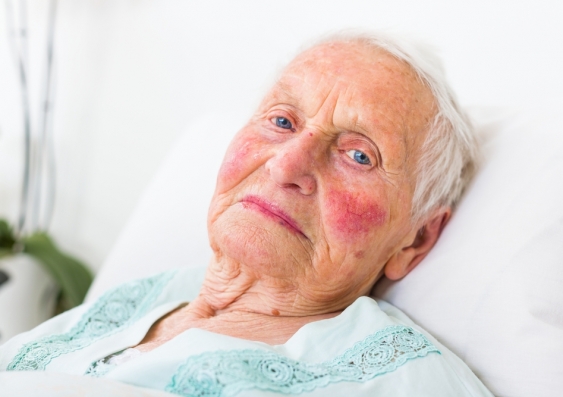COVID-19 places spotlight on dying alone
The relational, spiritual, cultural and social needs at the end of life among aged care residents require much greater attention and resourcing, according to UNSW experts.
The relational, spiritual, cultural and social needs at the end of life among aged care residents require much greater attention and resourcing, according to UNSW experts.

In Australia and internationally, older people are more likely than younger people to die of COVID-19. Some of the most worrying clusters of cases are in residential aged care facilities, including so-called hotspots Newmarch House and Dorothy Henderson Lodge in Sydney.
In response, many aged care facilities have taken steps to restrict contact between residents and visitors. Some have imposed voluntary lockdown. Yet some family members of residents say the restrictions have gone too far because their loved ones are facing the end of life alone.
There have been countless reports during the coronavirus emergency of people dying alone, both because older people are separated from their families, and because resource-constrained healthcare systems struggle to maintain presence at the bedside of a person approaching the end of life.
These reports have touched a nerve across our communities. Dying alone has come to signify not only a harrowing aspect of the pandemic, but also the strained capacity of our health and care systems to cope with the new circumstances.
Dying alone – although it may be a preference for some – challenges our cultural norms and ideals about the end of life, namely being surrounded by loved ones.
Being denied access to a dying loved one – a husband of decades or a mother – also has profound psychological and practical consequences for families. And distancing measures during the pandemic have unsettled our cultural practices after death, as family members have been unable to physically congregate to grieve.
Concern about the separation of older people with the virus and their families has prompted some health workers to go to great lengths to keep people connected, such as setting up regular phone calls and video links.
Some hospitals have appointed specialist staff to keep families in contact and uphold cultural and spiritual rituals and practices. According to the Daily Mail one family was with their ageing father on video stream as he died in a Melbourne hospital.
According to a report in the Sydney Morning Herald, Intensive Care Unit director at the Austin hospital in Melbourne, Dr Stephen Warrillow, said: “If somebody is dying we would always try and find a way so there is human connection. No one ever dies alone in ICU. Ever.”
While for most Australians, social distancing has been a challenging disruption from normal work and family life, many residents in aged care facilities are all too familiar with the suffering imposed by isolation.
Previous estimates have suggested that up to 40 per cent of aged care residents have no visitors, even in normal circumstances. So even outside of the current pandemic, many older people face the end of life without the sense of social, relational and cultural connectedness that most of us would hope for and expect.
Why doesn’t this generate the same horror in the community?
Social isolation at the end of life in residential aged care has complex causes, and devastating effects. Many contemporary families are widely dispersed and geographical separation makes visiting more difficult. As older residents’ bodies and minds deteriorate, fear, shame or lack of understanding can lead to less interaction between residents and their loved ones.
An absence of social connection can lead to feelings of worthlessness, hopelessness and depression for those approaching the end of life. As residents are exposed to the deaths of peers or co-residents, this also severs social ties, affecting their sense of belonging and community.
As the bodies and minds of older people change, they need more support to maintain social and relational connection and cultural and spiritual identity. So too, families need more support to remain connected to their older members through these changes, and through the geographical separation now common in contemporary families. This will provide older people with wellbeing, identity and dignity in death, as well as in life.
Over the last decade, Australia’s frameworks and guidelines for palliative and end-of-life care for older people have more adequately recognised the importance of social relationships. Yet the relational, spiritual, cultural and social needs at the end of life among people in residential aged care and their loved ones are in need of much greater attention and resourcing in policy and practice.
While hospital and residential aged care staff find new and creative ways to help their residents connect with others, perhaps the pandemic can serve as a timely reminder of the need to support all efforts to improve social and cultural connection for our older residents as they approach the end of life. After all, one day that might be us.
Dr Emma Kirby is a UNSW Scientia Fellow in the Centre for Social Research in Health, UNSW Sydney. Her research draws on case studies to provide a critical sociological analysis of advanced illness and end-of-life care.
Dr Georgia van Toorn is a social researcher at UNSW, focusing on social policy, political economy and critical disability studies.
Associate Professor Myra Hamilton is a Principal Research Fellow at the ARC Centre of Excellence in Population Ageing Research at the University of Sydney.
This article was originally published in Australian Ageing Agenda.